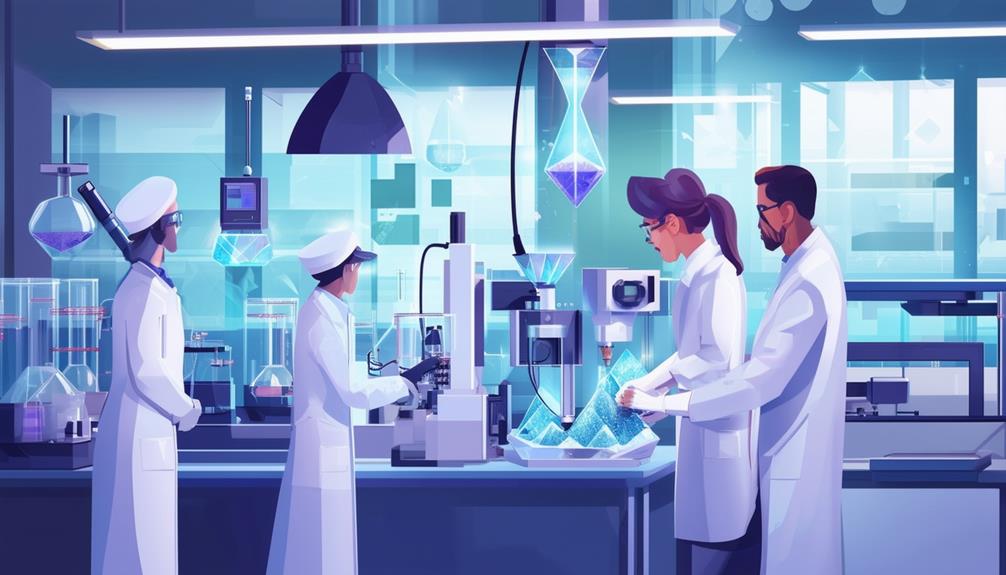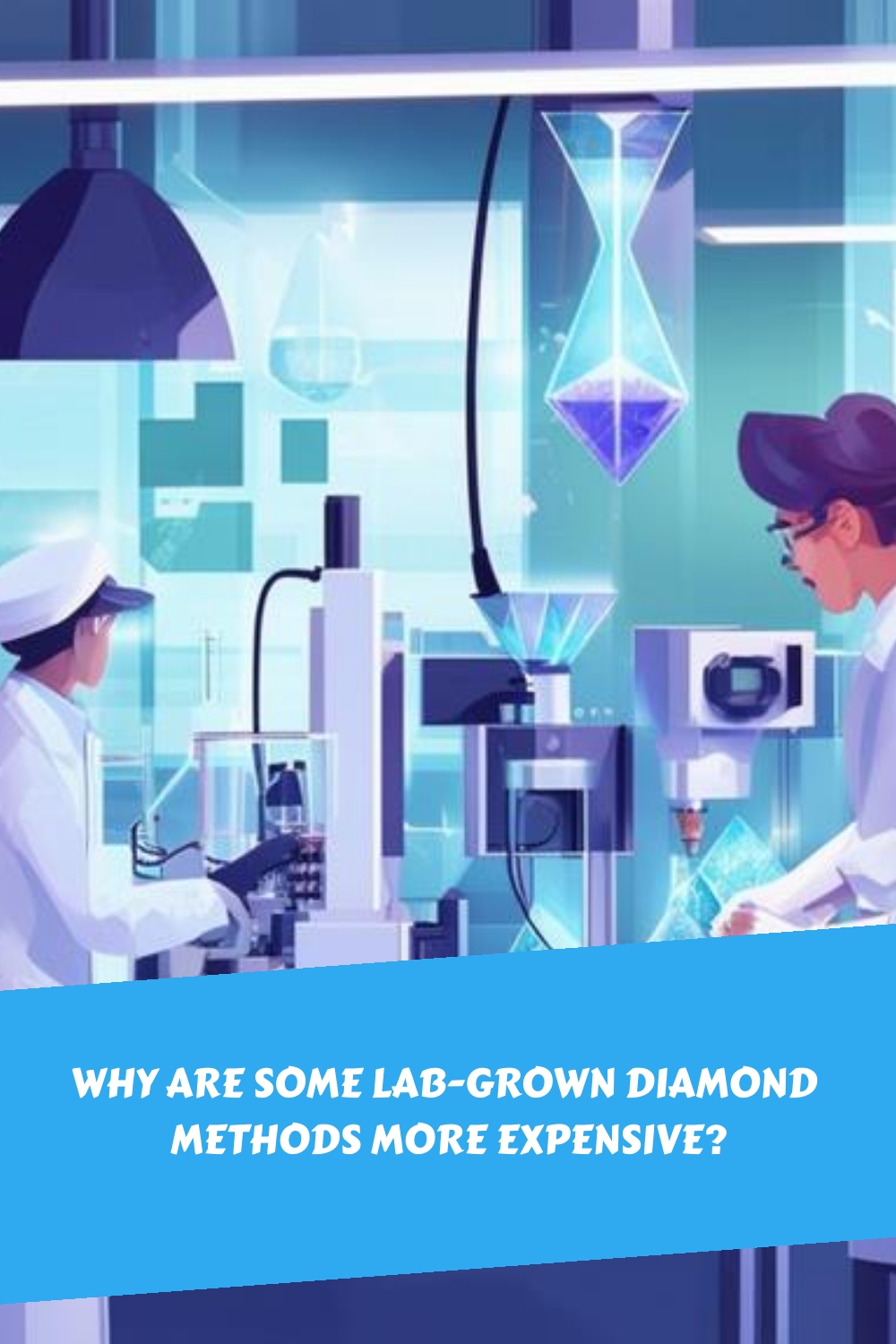Article Contents
Our Quick Answer
Lab-grown diamonds are expensive because they require advanced technology and skilled workers to create diamonds that look like natural ones. These high-tech methods and expert care drive up the cost, even though the diamonds are made in a lab.
The higher costs associated with lab-grown diamond methods such as Chemical Vapor Deposition (CVD) and High Pressure High Temperature (HPHT) stem from the complexity and precision required in their production processes. These methods utilise advanced technology and equipment to meticulously replicate the conditions under which natural diamonds form.
This not only requires significant initial investment in technology but also ongoing expenses related to system maintenance and innovation. Additionally, the expertise of skilled technicians who oversee the diamond creation process influences the final product’s qualities—such as cut, colour, clarity, and carat—which in turn affect the price. Premium prices are often justified for larger diamonds and those that meet higher quality standards.
Understanding these elements helps clarify the pricing structure in the lab-grown diamond industry.
Key Points
- The use of advanced machinery in CVD (Chemical Vapor Deposition) and HPHT (High Pressure High Temperature) methods drives up production costs due to the sophistication of the technology required.
- Regular updates to technology and ongoing maintenance of facilities necessitate substantial financial input.
- The HPHT method, being particularly energy-intensive, incurs significant operational costs.
- The need for specialised expertise and skilled labour in the diamond creation increases labour expenses.
- The high standards of quality and larger carat sizes that some methods achieve justify the premium pricing for lab-grown diamonds.
Production Method Variations
The production methods for synthetic diamonds, primarily Chemical Vapor Deposition (CVD) and High Pressure High Temperature (HPHT), significantly impact their cost due to the differing levels of technology and expertise each method requires. The CVD method is known for producing high-quality diamonds through a process that requires sophisticated equipment and controlled environments. These factors lead to high initial technology costs and ongoing expenses for maintenance and skilled labour, which in turn affect the overall production costs.
On the other hand, the HPHT method, which is an older technique, consumes a lot of energy and requires specialised machinery designed to mimic the natural conditions under which diamonds form. This method’s complexity necessitates a combination of engineering and gemological expertise, adding to the production costs.
Both methods involve extensive research and development efforts aimed at improving efficiency and minimising imperfections, leading to higher costs for the final product. These investments reflect the industry’s commitment to producing diamonds that meet the highest standards of clarity and colour, each stone symbolising purity and the relentless pursuit of excellence.
Equipment and Facility Costs
Exploring the realm of equipment and facility costs reveals that the production of lab-grown diamonds involves significant investment in specialised machinery and controlled environment setups. The complexities of methods like High Pressure High Temperature (HPHT) and Chemical Vapor Deposition (CVD) necessitate not only cutting-edge technology but also stringent environmental controls that replicate the natural diamond-forming conditions. These requirements significantly increase both the initial equipment investment and ongoing facility maintenance costs.
Additionally, staying competitive in the lab-grown diamond industry requires continuous technological upgrades, adding to recurring expenses. Proper maintenance of these advanced machines is crucial for ensuring both the reliability and efficiency of diamond production, which in turn leads to significant operational costs. Facility maintenance is vital, as even minor fluctuations in conditions can impact the quality of the diamonds produced, affecting the overall cost structure.
The necessity to invest in these high-tech facilities and their maintenance is paramount to meet the exacting standards required to produce high-quality lab-grown diamonds. These investments not only enable the production of diamonds that closely resemble natural diamonds but also influence the pricing of the final product, making some lab-grown diamond methods more expensive than others.
Quality and Carat Contribution
Significant investments in technology and facility maintenance, as well as the quality and carat weight of lab-grown diamonds, have a substantial impact on their market pricing. Striving for superior quality in these diamonds requires precise control over the cut, colour, clarity, and carat weight—key determinants of price. This pursuit of excellence demands advanced production techniques that require both significant initial capital and ongoing operational expenses to uphold high standards of precision and quality.
The meticulous transformation of a carbon seed into a polished gem is carefully supervised by skilled artisans. Their craftsmanship is vital in enhancing the diamond’s natural properties and increasing its aesthetic value. This process not only presents the diamond as a luxurious item but also as a testament to human artistic achievement. As a result, diamonds that demonstrate exceptional quality and larger carat sizes command higher prices.
Furthermore, the pricing of these diamonds reflects consumer choice, which is influenced by individual preferences and the importance placed on expert craftsmanship. Essentially, higher production standards and larger carat weights result in higher prices, demonstrating that quality comes with a price.
Technological and Expertise Requirements
The production of lab-grown diamonds is both technologically demanding and costly due to the need for specialised equipment and skilled expertise. These synthetic gems are created in highly controlled environments that replicate the extreme conditions necessary for natural diamond formation. Such high-tech facilities require substantial capital investments, which contribute to higher prices in lab-grown diamond production methods.
Additionally, the process is energy-intensive, with significant energy required to maintain the precise temperatures and pressures needed for diamond synthesis. This energy consumption translates into ongoing operational costs, potentially making some lab-grown diamond methods more expensive than others that may use less energy or more efficient technologies.
Expert artisans play a crucial role in the final stages of production, particularly in cutting and polishing, where meticulous precision is essential. These artisans possess specialised skills honed through extensive training and experience, justifying their higher wages. The combination of advanced technology and expert craftsmanship drives the overall cost structure of lab-grown diamonds, underscoring the intricate balance between innovation and traditional skill in their production.
Market and Consumer Demand
As consumer interest grows, market demand significantly influences the pricing strategies of lab-grown diamonds. Consumers increasingly favour ethical and high-quality options, prompting the market to adjust prices to reflect production costs and consumer expectations. The perception of lab-grown diamonds as ethical and luxurious drives sophisticated marketing strategies, potentially increasing prices.
Key factors illustrating the impact of market and consumer demand on pricing include:
- Consumer Perception and Preferences: The appeal of sustainability increases demand for ethically sourced and expertly crafted diamonds. This trend shifts consumer preferences towards premium, quality-assured stones.
- Marketing Strategies and Brand Reputation: Effective marketing that promotes the unique attributes of lab-grown diamonds can boost consumer interest and their willingness to pay higher prices for added value and brand image.
- Supply Chain and Distribution Channels: The efficiency of supply chains and the strategic choice of distribution channels are crucial. Their management directly affects the retail price, reflecting the costs involved in delivering these diamonds to consumers.
Businesses must strategically consider cost, consumer interest, and market trends to set appropriate prices for these innovative products.
Frequently Asked Questions
Why are some lab-grown diamonds so expensive?
The high cost of some lab-grown diamonds can be attributed to the significant expenses associated with their production and the sophisticated technology required for their creation. These factors contribute to the enhanced quality of the diamonds, appealing to consumers who prioritise ethically sourced alternatives.
Is there anything wrong with buying a lab-grown diamond?
Buying lab-grown diamonds is ethically and environmentally preferable, as it avoids the ecological harm and labour issues linked with traditional diamond mining. This choice allows consumers to enjoy luxury while adhering to sustainable practices.
Why are lab-grown diamonds not valuable?
Lab-grown diamonds are usually seen as less valuable than natural diamonds as they can be created in large amounts, guaranteeing a consistent and easily expandable supply. This diminishes their scarcity and, as a result, their perceived exclusivity and worth among consumers who value individuality in their buying decisions.
Can a Jeweller Tell if a Diamond Is Lab Grown?
Yes, jewellers can distinguish lab-grown diamonds from natural ones using specialised equipment and techniques. This expertise, supported by investment in appropriate technology, allows customers to make informed choices between different types of diamonds.
Conclusion
In the field of lab-grown diamonds, converting carbon into stunning diamonds incurs substantial expenses. These costs can differ based on the intricacy of the technology and the level of expertise needed. Variances in manufacturing techniques impact the ultimate cost of these diamonds.
Furthermore, the desire for bigger and more flawless diamonds drives technological advancements, lifting both customer anticipations and market norms. Consequently, each lab-grown diamond represents not only a beautiful jewel but also a symbol of human ingenuity and the quest for opulence.



